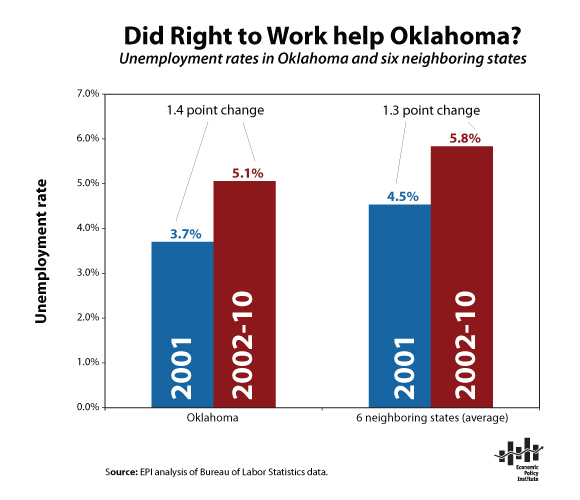In 2001, Oklahoma became the 22nd and most recent state in the U.S. to pass “right-to-work,” a law whose name suggests it is good for workers, but is really focused on weakening labor unions. Today, as more states consider adopting right-to-work laws, it is useful to look at Oklahoma’s labor market before and after it adopted right-to-work. The Figure — derived from data in EPI’s recent paper, Does Right to Work Create Jobs? — compares the unemployment rate in Oklahoma to that of six neighboring states. The Figure looks at 2001, the year Oklahoma passed its right-to–work law, and the nine years since then.

As it shows, both Oklahoma and surrounding states have seen unemployment rates rise by almost the exact same amount in the years since 2001. Claims that right-to-work would create jobs and improve Oklahoma’s employment situation turned out to be false.
